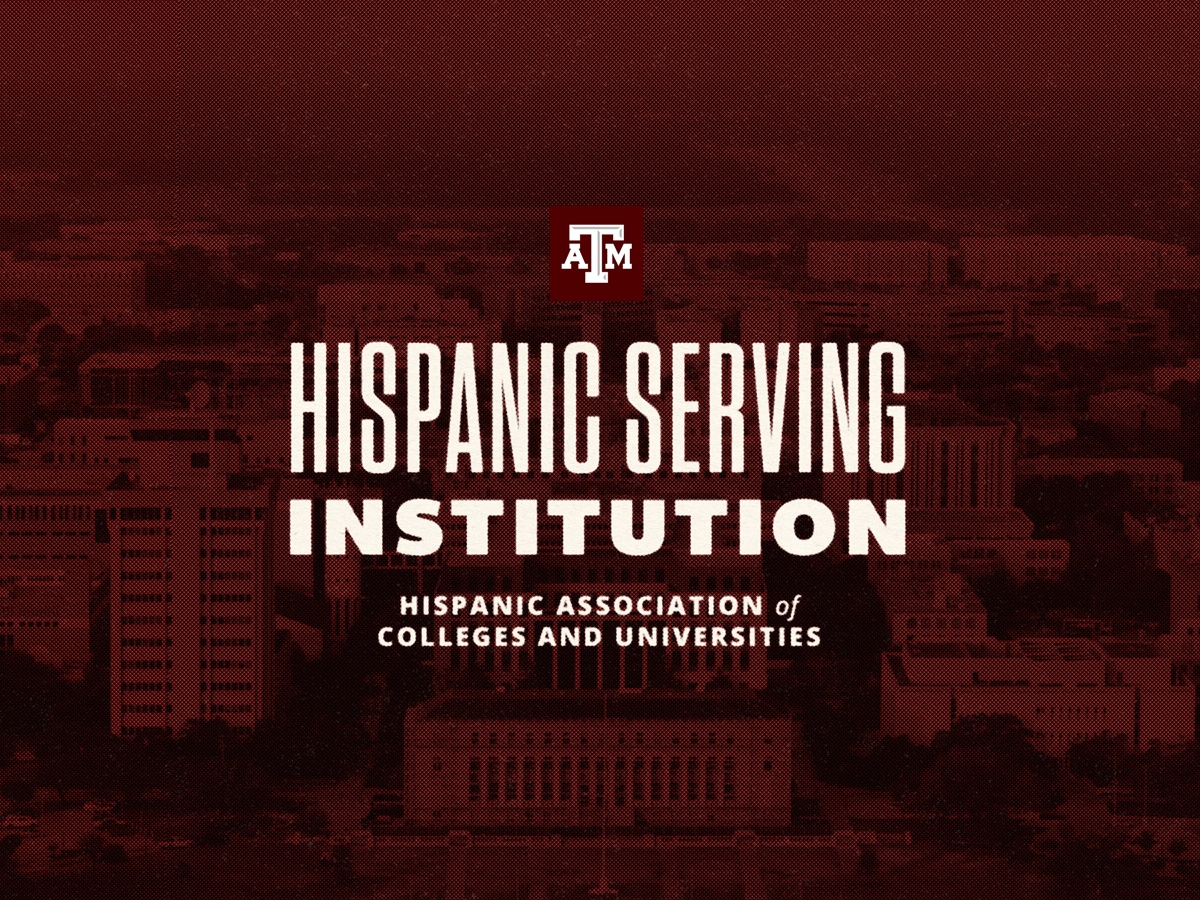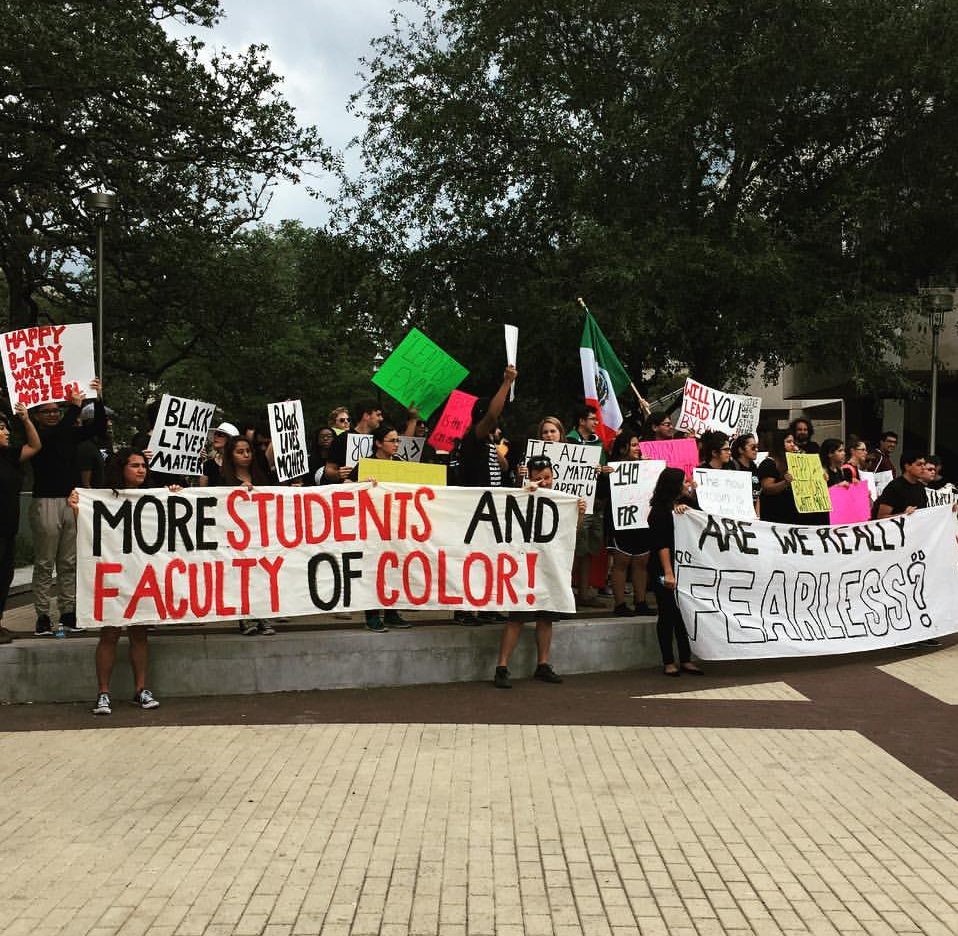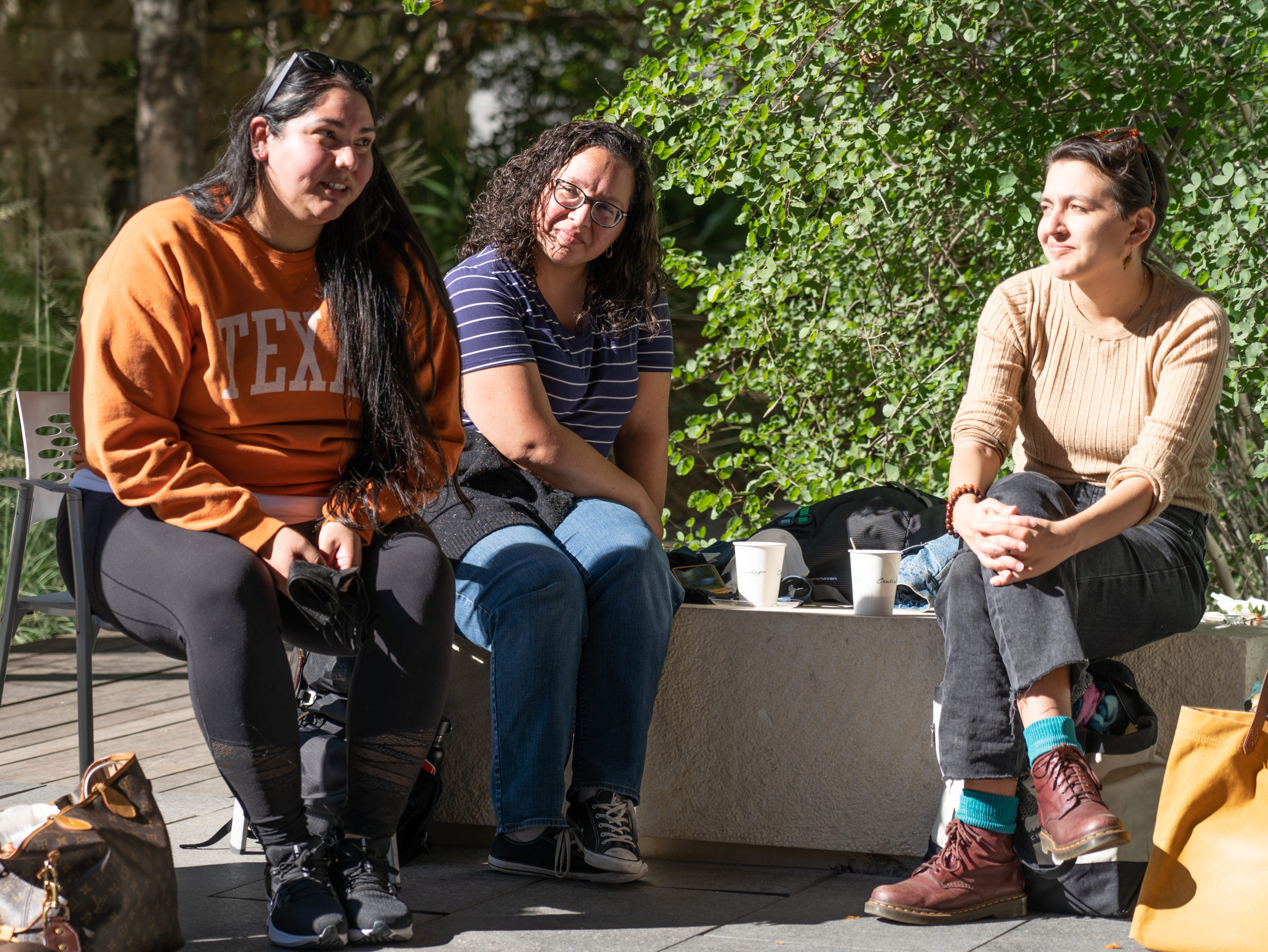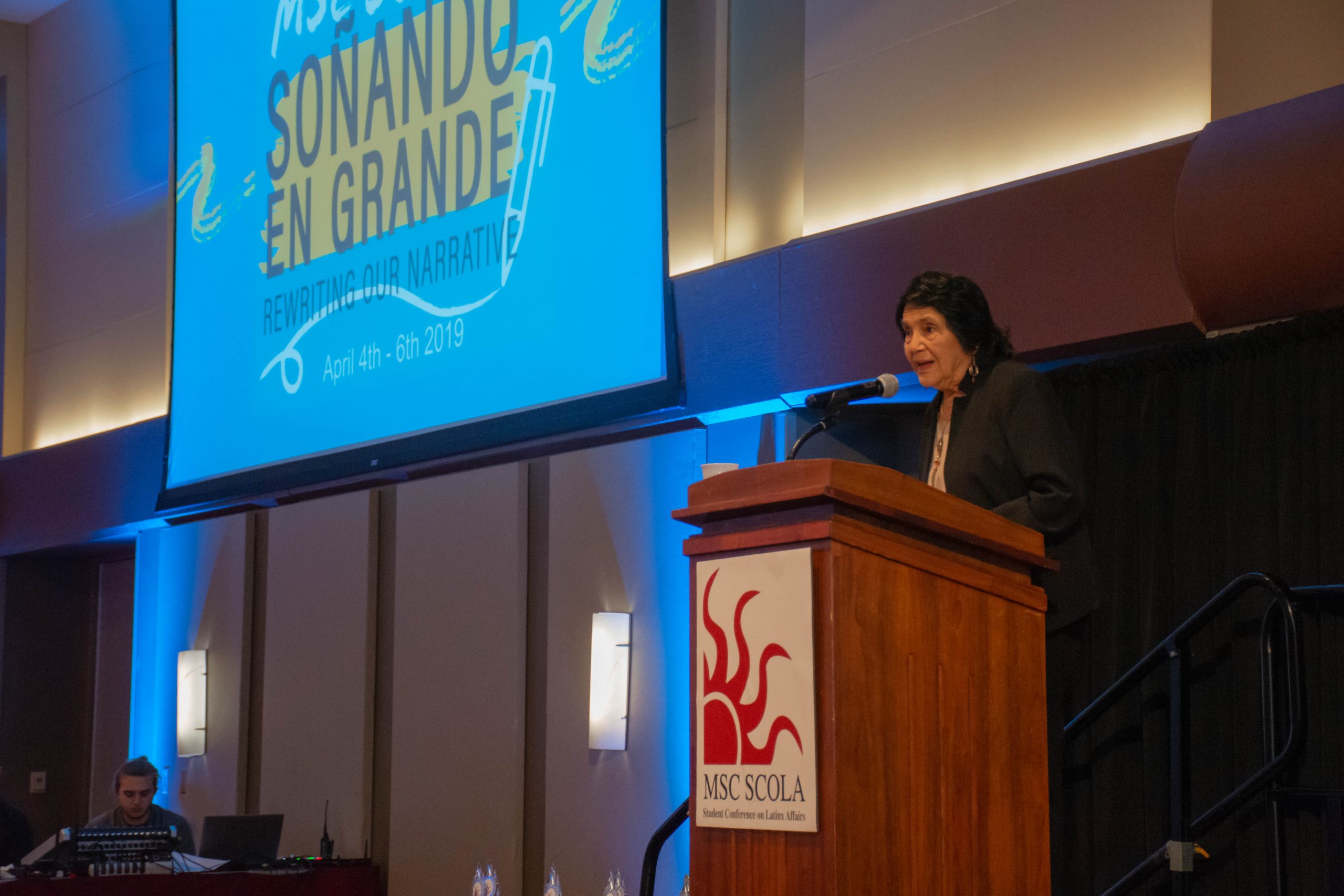Defining ‘Serving’ in A&M’s new Hispanic Serving Institution status
A&M recently announced the university had achieved Hispanic Serving Institution designation by the Hispanic Association of Colleges and Universities. Professors and graduate faculty reflect on what it means to serve Hispanic and Latinx Aggies moving forward.
By Ronaldo Mata
As Texas A&M University has moved closer to official Hispanic Serving Institution status since 2018, faculty discuss what “Serving” means at the state’s largest university.
Beyond the metrics that qualify an institution for HSI status is developing a culture and understanding of what “servingness” must bring to the campus community, said Darrel Wanzer-Serrano, associate professor of communication and Core faculty of Latino/a and Mexican American studies. Following Gina Ann Garcia’s field-defining work on HSIs, Texas A&M will need to build robust curricula and support programs like Latino/a and Mexican American Studies, because those academic components help to generate a higher sense of belonging and create visibility for Latino issues amongst the entirety of Aggieland, he said.
As Texas A&M begins moving meaningfully toward an HSI transition, the need is to cultivate models of servingness that uplift students, faculty and staff, said Wanzer-Serrano. One idea is the long-supported, student-generated vision for a Latino Center, which could be a hub for inclusivity, advocacy and information regarding a range of matters affecting Aggie Latinos, he noted.
“There’s a big emphasis on reaching HSI status on this static measurable thing,” explained Wanzer-Serrano. “We’ve got the ‘H’ down right, but then there’s less attention to what the ‘S’ means.” Wanzer-Serrano is associate head for Diversity, Equity & Inclusion for the Department of Communication.

Darrel Wanzer-Serrano is associate head for DEI in the Department of Communication and Core Faculty in the Latino/a and Mexican American Studies Program. His award-winning book, ‘The New York Young Lords and the Struggle for Liberation’ covers the history of Latinx social movements.
With 70,418 students enrolled for academic year 2020-2021 – including 55,568 undergraduate and 14,850 graduate students at Texas A & M University-College Station, according to univstats.com – the university’s ability to serve has to be representative of serving the needs of Texas, as well. Of note, for the first time in 20 years, Texas A&M’s Hispanic student population had ceased its upward trend in 2021, falling below 1 percent and dropping from 25.22 to 24.97 percent in Fall 2021, according to Data and Research Services. The Hispanic Association of Colleges and Universities has continued to list Texas A&M as Hispanic Serving in the membership category during this time.
On Nov. 30, Texas A&M Today reported the university has achieved HSI designation from the Hispanic Association of Colleges and Universities. The designation is awarded to educational institutions where total Hispanic enrollment constitutes a minimum of 25 percent of total undergraduate enrollment. Hispanic enrollment at Texas A&M reached 25 percent in fall 2020, and again in fall 2021, according to the article.
Texas A&M’s Interim Vice President and Associate Provost for Diversity Annie McGowan noted in the Texas A&M Today article the listing does not certify an institution as a federally designated HSI for Title V or other federal grant purposes, but was quoted saying it is a major step in the right direction.
“Serving” as it is used in HSI is a concept, not a definition. Besides the 25% metric, there are no guidelines describing what responsibilities HSI’s must meet; the measures taken to live up to HSI status are left up to individual schools. Once the 25% threshold is crossed, Wanzer-Serrano said he believes it stops being a matter of status.
“HSI status is one of the things that helped recruit me to this university,” explained Wanzer-Serrano. “I wanted to be at an institution with more Latino students. I wanted to be serving that student population.”
First and foremost, the designation should inspire introspection within the University on their role as an HSI, said Felipe Hinojosa, associate professor in the history department and chair of the Climate and Inclusion Committee for the history department.

In 2015, students and faculty held a demonstration to advocate for more programs to serve minority communities on campus.
“If we are a Hispanic serving institution, then try to figure out what that exactly means – and try to work towards making A&M truly a serving institution – whether we’re 25% or not,” said Hinojosa. It goes beyond the grants, funding and “PR jackpot” an HSI designation can bring Texas A&M, he said.
Born and raised in the border city of Brownsville where 90% of the population is Hispanic or Latinx, Hinojosa said he has devoted his professional life to writing and researching Chicano and Mexican American movements. Growing up, Hinojosa said the day-to-day struggles were apparent. Texas A&M is the largest university in a state with the second largest Hispanic population, and Hinojosa said he believes the university falls short of its mandate.
“At this campus that is representative of serving the needs of Texas,” argued Hinojosa, “we have to serve the needs of the people of Texas. We’re not doing that.”
The best way for A&M to begin is to look at what peer institutions are doing, Hinojosa said. While schools like Ohio State University, Michigan State and the University of Texas at Austin have HSI task force committees, Latinx student centers, and Latinx curriculum, A&M is decades behind. To Hinojosa, centering Hispanic and Latinx students via “servingness” benefits the entire campus community
“[These services for] Latino students are services that are open to all students but tend to focus on the needs of Latino students,” said Hinojosa. “It’s not about exclusion – which a lot of people seem to misconstrue – it’s not about that. It’s about making the university much more whole.”
Anna Wolfe, associate professor in the Department of Communication, said she sees examples of “servingness” in the work some professors already do.
“I think creating a culture of servingness requires that you have a lot of people who are champions of the idea,” said Wolfe. Faculty including Wanzer-Serrano, Leroy Dorsey, Joey Lopez and former A&M faculty Srivi Ramasubramanian are some of the faculty who create a culture of “servingness” for Hispanic and other minority students, said Wolfe.
“That’s one way that I think we can serve students,” explained Wolfe, “by putting people in leadership positions and highlighting them and platforming them to demonstrate that there’s a pathway forward.” In order to create a more effective institution, and the key to being an effective serving institution, is to adopt a multifaceted approach to servitude, she noted.
Showing Trajectory is a recent initiative under the leadership of COMM faculty Joey Lopez and Jonathan Guajardo that Wolfe highlighted. The program’s goal is to connect all students to academic and industry professionals who demonstrate there is no single path to success. In November, under Lopez and Guajardo’s leadership, the COMM Media and Gaming Lab presented a Mini Lecture series open to all students that featured four filmmakers who discussed their stories and journeys in film including current projects.
Lopez is an associate professor of the practice who has described his goal as building community through sharing lived realities and “making stuff.” Outside academia, Lopez is a professional media consultant, photographer, videographer, entrepreneur, community organizer, activist and “general life enthusiast.” Guajardo is a full-time lecturer who teaches the integration and promise of new media and emerging technologies in the 21st Century. A native San Antonian, he owns and operates two successful media companies.

In November, the 2021 Latinx Critical Creative Consortium, co-hosted by COMM professor Joey Lopez, gathered academics and creatives from around Texas to speak with students on Latinx topics in Austin.
By providing people from different backgrounds with mentorship and experience and getting them to graduation, A&M is not only serving students, but legitimizing the unconventional paths non-white students take to achieve higher education. This, in essence, is its own form of liberation, Hinojosa said.
“Think about what it means when you’re a Latino student and you take a class where your contributions to America are taken into consideration,” said Hinojosa, “where the story of your people is a part of the American story.”
This, in essence, is a form of liberation, said Hinojosa. By being represented in the curriculum and the faculty that teaches it, students can feel invested in their own education and truly belong not only at A&M but in society and do not have to conform to different standards just because theirs are deemed illegitimate or unconventional.
“When you see yourself reflected in [education] you feel you’re a part of a team and there’s nothing greater than to feel like you’re a part of a community, that you’re an Aggie that you can wear that maroon and take pride in it, and that that maroon acknowledges who you are and your community’s contributions to American society,” said Hinojosa. “That’s liberatory.”
Second-year doctoral candidate Mariana Rodriguez said she understands that feeling. Moving from Laredo to College Station suddenly put her race at the forefront of her identity, something Rodriguez said took some getting used to.
“Coming from a place of privilege where I was only exposed to people who looked like me and my race, my language, my culture had never been a problem,” said Rodriguez. “And now I was going to be entering a space [where] it could very much become a problem.”
Rodriguez said the communication department and her cohorts have made the transition smooth for her by not making her have to “edit” aspects of who she is to succeed. While that might be how she feels, Rodriguez understands that not every student of color at Texas A&M might have the same transition into a predominantly white institution. These are the types of conversations that should be happening campus-wide, Rodriguez said.

Latinx civil rights advocate Dolores Huerta spoke at the 2019 MSC Student Conference on Latinx Affairs. Read more about the upcoming March 31- April 2, 2022, conference at SCOLA.tamu.edu
“It’s difficult to have that conversation if you don’t have students of color or faculty of color,” said Rodriguez. “How can we have these conversations if you don’t have the people in place to begin with?”
Rodriguez studies how race and racism is communicated within higher education. In her time at Texas A&M International University, she said she observed many ways the university worked to serve their primarily Hispanic population. Many are first generation college students unaware of the higher education process. Having people in place that can understand the cultural circumstances of students within a white space is something Rodriguez said she wishes could be applied at Texas A&M.
“Your parents might not have had these conversations with you; you might have not had older siblings have these conversations with you,” said Rodriguez. “They do an excellent job of guiding you from application to your first day and ensure there is someone there to guide you.”
In her research and her work as research assistant for the Race and Ethnic Studies Institute, Rodriguez acknowledges the difficulty of speaking about these issues. Yet, Rodriguez argues that once racism is understood and discussed as a concept rather than an accusation, the necessary conversations about the effects of racism may finally take place.
“[Race and racism] is more than just the individual,” Rodriguez said. “And if we can separate that and have a dialogue about it we cannot have, I think, dialogue for change unless we understand that.”
So what steps would kickstart A&M’s transition into an Hispanic Serving Institution? Wanzer-Serrano said he considers UT Austin’s Hispanic serving institution transition committee a blueprint for what Texas A&M can do. By bringing together expert faculty who do research on HSI’s organizational change, Latinx studies, higher education and culture, A&M’s journey into “Servingness” can start off on the right foot.
There are countless other things Texas A&M could and should be doing, said Wanzer-Serrano, including hiring, retaining and supporting more Latino faculty and staff, and greater outreach and engagement into Latino communities across Texas. Those are all details that can be worked out through a deliberative process with key stakeholders once the administration is committed to applying for federal HSI status, he said.
The need is to begin planning a further transition from a Latino “enrolling” institution to a Latino “serving” one, said Wanzer-Serrano..
“When you can put those people together right, those different interest groups together,” said Wanzer-Serrano, “then you can start developing plans that are meaningful and workable within the context of Texas A&M University.”
